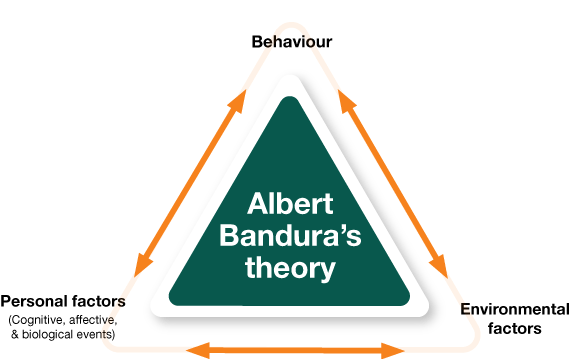
From his research Bandura formulated four principles of social learning. These were:
- Attention. We cannot learn if we are not focused on the task. If we see something as being novel or different in some way, we are more likely to make it the focus of their attention. Social contexts help to reinforce these perceptions.
- Retention. We learn by internalising information in our memories. We recall that information later when we are required to respond to a situation that is similar the situation within which we first learnt the information.
- Reproduction. We reproduce previously learnt information (behaviour, skills, knowledge) when required. However, practice through mental and physical rehearsal often improves our responses.
- Motivation. We need to be motivated to do anything. Often that motivation originates from our observation of someone else being rewarded or punished for something they have done or said. This usually motivates us later to do, or avoid doing, the same thing.
How it can be applied to education
Social modelling is a very powerful method of education. If children see positive consequences from a particular type of behaviour, they are more likely to repeat that behaviour themselves. Conversely, if negative consequences are the result, they are less likely to perform that behaviour. Novel and unique contexts often capture students' attention, and can stand out in the memory. Students are more motivated to pay attention if they see others around them also paying attention. Another less obvious application of this theory is to encourage students to develop their individual self efficacy through confidence building and constructive feedback, a concept that is rooted in social learning theory. http://psychology.about.com/od/developmentalpsychology/a/sociallearning.htm .
This site gives you an brief overview of the social learning theory.
So the way that educators and guardians conduct themselves and behaviours displayed in front of children will determine the behaviours of the children.
ReplyDeleteYes the way you understand it makes it clear and I also want to say that social learning theorists determined that children learn with and without rewards. Parents must know what affects their child’s behaviour other than operant conditioning. In order to understand other ways that children learn good and bad behaviours parents must learn about modeling. Social learning theorists describe that children observe and model the behaviours of the people around them. Children start to model behaviours within their first year of life. Parents are primarily with their children during this critical year and must display appropriate behaviours and language in order for their child to do the same. Children model behaviours in order to understand the people and the new situations around them. A parent’s role as a model is very imperative, this is because children look to adults, especially their parents, to learn. In fact, children observe and model their parents more than experimenters, their peers and other strange adults. Children view their parents as more skilled, knowledgeable and as higher status compared to others. If parents want their children to behave well, they need to understand that children copy all the behaviours that their parents display, good and bad. At young ages children do not know the difference between right and wrong unless their parents teach them the differences. This becomes a problem when teaching children behaviours because they model everything and then, later, determine which behaviours are actually appropriate. Parents must be careful to only display good behaviour in front of their children because children do not filter out the results of the behaviour until later. For children, the benefits of modeling both behaviours are much more important than the costs of modeling the wrong behaviour. Children do not immediately know which behaviours to model and which ones to ignore so parents must be very careful in displaying appropriate behaviours around their children in order to allow their children to develop healthily. Charlene if you do have the time you must read the book Child and Adult Development that is in our library very interesting book to read.
ReplyDelete